Team-BHP
(
https://www.team-bhp.com/forum/)
Quote:
Originally Posted by sagarpadaki
(Post 4679821)
I feel using the Dream liner for this for PR stunt. I would not be surprised if Boeing had vested interests in this. The dream liner in any of its 3 configuration cannot travel this distance with business load. Qantas wanted a research and Boeing piggybacked to boost their image in the troubled times that they are in. Also since these aircraft were anyway scheduled to be delivered to Qantas made the whole thing easier.
|
I am not so sure as to the reasons Qantas picked a Dreamliner.
One thing have a look at the flight path:
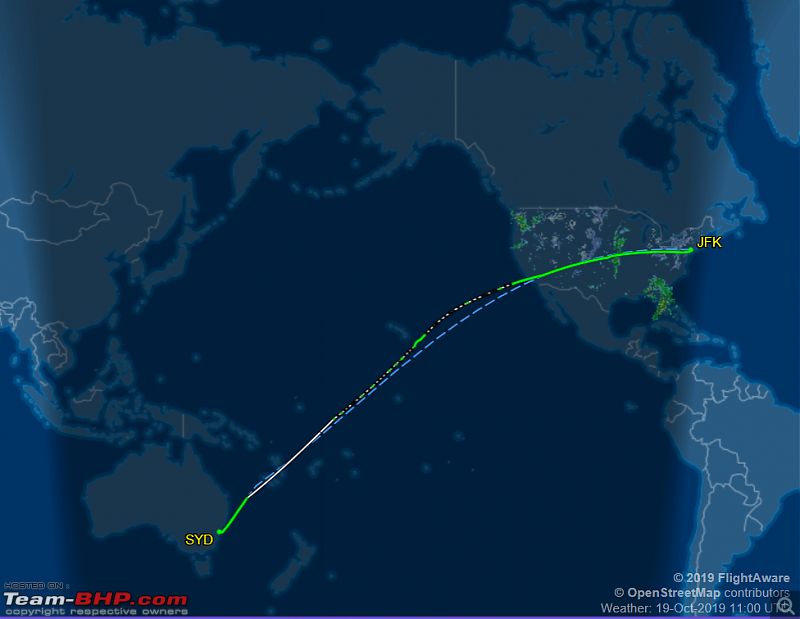
This is a flight straight across the Pacific. Not many routes take you across the Pacific, let alone such distance. The Dreamliner does comply with one of the highest ETOPS ratings I believe.
This means it is allowed to be up to 6 hours (?) flight time away from any suitable alternate.
Looking at this route, I am not sure how that would work out. You really need to have some more visibility.
But even so, in order to pull this flight off, various officials must have given their blessing, because it is outside all normal operating norms. I am not sure, but I thought that also route/plane combinations need to get some sort of formal ETOPS approval?
To some of my earlier comments around flight plan considerations. There might have been very specific reasons why a Boeing was chosen over another type of plane. Would be interested if anybody can elaborate a little on what it would take to fly such a one off route, from a formal approval, sign off point of view from the various stakeholders. And to what extent that might influence the choice of plane.
Br Jeroen
This article gives some idea on why Quantas might have chosen the Boeing 787. It was simply available, just delivered and rather than to fly it home empty they flew it to New York and embarked on this epic journey.
There might have been other considerations as well, but at face value, it makes sense as a new plane needs to be rostered into the route network. No problem if you need to push that out a few days. Pulling out a plane from the working fleet for something like this, is likely to be more complex, logistically and will have more impact on the overall roster and schedules.
I would still like to understand what other formal approvals needed to be provided by whom to make this flight happen?
Also, on the final choice of plane for this route
Quote:
Currently, no commercial passenger aircraft is capable to doing so.
|
and:
Quote:
Much of that likely will hinge on whether Airbus and Boeing can deliver aircraft updates that satisfy Qantas’ desire to launch the ultra-long routes. Qantas would also have to secure regulatory approval and crew contracts that would allow pilots and cabin crew to work flights that could top 20 hours.
|
I would still like to understand what other formal approvals needed to be provided by whom to make this flight happen? What regulatory approval are required to turn this into a regular scheduled flight?
The article also mentions that Quantas is still in discussion with both Airbus (A350) and Boeing (777x) on meeting their exact requirements for a potential plane on this route, if it al goes ahead.
Jeroen
https://thepointsguy.com/news/qantas...ongest-flight/
Quote:
Originally Posted by Jeroen
(Post 4679978)
This is a flight straight across the Pacific. Not many routes take you across the Pacific, let alone such distance. The Dreamliner does comply with one of the highest ETOPS ratings I believe.
This means it is allowed to be up to 6 hours (?) flight time away from any suitable alternate.
|
The flight QF7879 was done using VH-ZNI, having Genx-1B engines. So, this aircraft is
certified for ETOPS 330 (The Airbus A350XWB-900 is
ETOPS 370 certified) (All certifications under standard atmospheric conditions!). The aircraft was delivered to QANTAS on 15/10/2019, so
it was available, as you rightly mentioned in your post.
I'm attaching 2 reference pictures below, the first one showing the no-fly regions for an ETOPS-180 rated aircraft and the other one showing the same data for an ETOPS-330 rated aircraft. The reference aircraft taken is B777 for the one engine out speed.
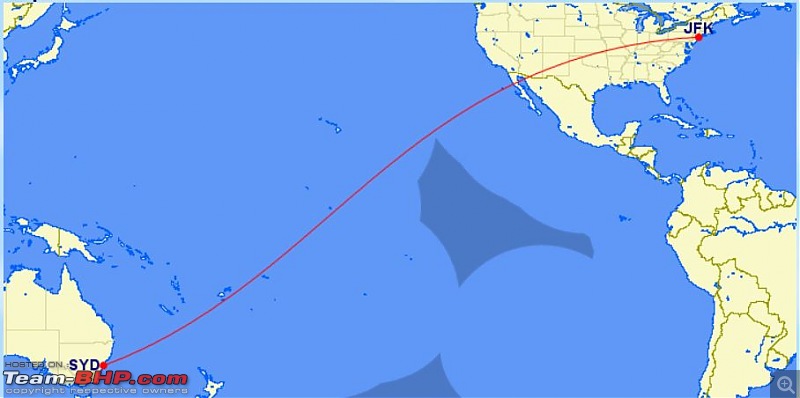
ETOPS-180
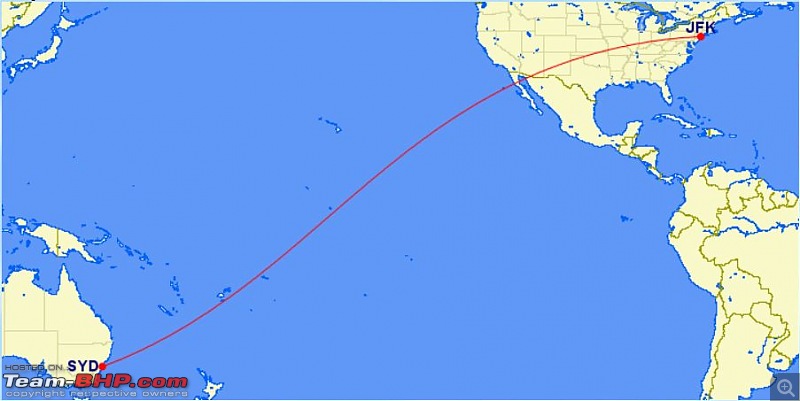
ETOPS-330
Below is the route taken by QF7879, which shows that they were closer to Hawaii.
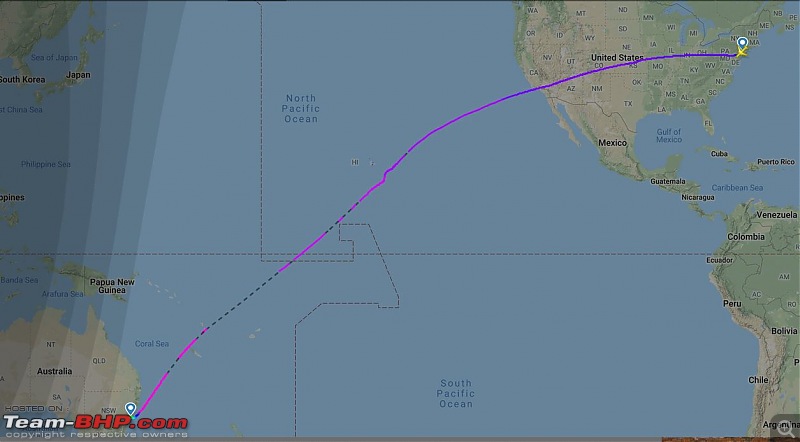
Theoretically at least, ETOPS-180 and ETOPS-207 covers about 95% of the Earth's surface.
Thanks for those graphs. Pretty amazing stretch this route!
Quote:
Originally Posted by A350XWB
(Post 4680546)
Theoretically at least, ETOPS-180 and ETOPS-207 covers about 95% of the Earth's surface.
|
I am not quite sure what that means. ETOPS has nothing to do with geographical coverage. Without going into all the details, but ETOPS is about being able to reach a suitable alternate destination in case of an engine out, within a certain time. (e.g. 180 or 330 minutes)
To our earlier discussion, and as clearly shown in ETOPS, it is not about how far you can fly, but within what time frame you must be able to get to a suitable alternate.
What makes a suitable airport consists of a long list of of requirements. Some are static, some are dynamic. Weather conditions is dynamic. When you set off you need to have ensured your ETOPS alternates along the route have suitable weather for you to land.
Some static examples: Your alternate needs to be able to accommodate your type of aircraft. Which means things like runway length, Fire Suppression Capability needs to be compliant to the capabilities, requirements, for your aircraft. (And it all needs to operational too!.
If the weather requires it, does the alternate have the relevant landing systems in place and are they operational etc. etc.
So there are many, many different aspects that need to be looked at, verified as part of the flight planning and finding suitable alternates. ETOPS 330 means that under an engine out condition the plane must be able to reach a suitable alternate within 330 minutes of flight time. How far it will get, geographically depends on many other factors, including the obvious ones, weather and wind.
So all in all, doing alternate planning under ETOPS for commercial operation is quite a complex trick. What makes it even more complex is these ultra long hauls. Because during the flight you have to remain ETOPS compliant. And weather at alternates might change. An airport might have to shut down a runway. An ILS system might break down. What might be a suitable alternate when you take off, 10 hours into the flight might not be a suitable alternate anymore!
So when making the initial flight plan, dispatcher will use whatever information is available to them, including all sorts of weather forecast, operational information from the various airports etc. All these forecast, considerations need to be monitored during the flight to ensure everything develops as planned. If not, you might have look for different alternates during the flight, or worse case, return.
Although not an ETOPS requirement as such, most carriers will try using alternates that are familiar to them. Which means they have an agent that can deal with customers, being able to do some maintenance etc. Number one priority is of course, making a safe landing. But then you need to be able to fix that engine, deal with the passengers etc. Not a safety concern, but definitely a concern.
Jeroen
Quote:
Originally Posted by Jeroen
(Post 4680568)
I am not quite sure what that means. ETOPS has nothing to do with geographical coverage. Without going into all the details, but ETOPS is about being able to reach a suitable alternate destination in case of an engine out, within a certain time. (e.g. 180 or 330 minutes)
|
The meaning of that sentence is only this: Under standard weather conditions (as specified in the certification process), in case of a single engine failure, an alternate airport, that is capable of handling that particular type of aircraft, can be reached within 180/330/370 etc. minutes of flight time. In that sense, an ETOPS-180 certified aircraft can do routes, that covers 95% of the earth's surface (Again, theoretically or under standard conditions).
As you mentioned in your post, there are static as well as dynamic/variable factors that determine the flight time. Many of the static inputs like the weight of the aircraft, type of aircraft, airport requirements for a safe landing at a particular weight, one engine out speed etc. are considered while giving the type certification.
The dynamic/variable elements cannot be considered for obvious reasons. Those are considered while planning and filing the flight plan, as described in your post.
http://www.dutchops.com/Portfolio_Ma...ions/ETOPS.htm
I take it that there were no fare paying passengers on that flight.
Did they have to sign some consent/ release forms?
Regards
Sutripta
Quote:
Originally Posted by Sutripta
(Post 4680754)
I take it that there were no fare paying passengers on that flight.
Did they have to sign some consent/ release forms?
|
From what I have gathered there were some “regular” passenger onboard as well. These were all frequent flyers that were scheduled already, but via the long way. A small number of them were invited to join the experience.
So I imagine they had already paid for their ticket? Did they have to sign a waiver. No idea.
Although this was a one off, it was still, just a regular flight, albeit a very long one. Well prepared, with more support and monitoring ongoing than ever. So you could argue it was as least as save as a regular stop over connection type of flight, if not safer. Only half the number of take offs/landing, shorter cruise period. So less time for things to go wrong overall.
But the lawyers might disagree with my engineering approach. :)
Jeroen
Quote:
Originally Posted by Jeroen
(Post 4681267)
Although this was a one off, it was still, just a regular flight,
|
This then should be similar to a charter flight.
Don't know about aircraft, but normally stage carriage and contract carriage regulations are different.
Quote:
But the lawyers might disagree with my engineering approach. :)
|
So put on your lawyer hat!
Regards
Sutripta
I hate long haul flights and God help you if you’re stuck in a middle seat or an otherwise uncomfortable seat on one of those. If there was a direct flight to the antipodes, I would still prefer to touch terra firma at Singapore or elsewhere. Totally not for me!
Quote:
Originally Posted by Sutripta
(Post 4681582)
So put on your lawyer hat!
|
Even though my dad was a lawyer, I do not have lawyer hat. Certainly not one that would fit a topic as laws and regulations pertaining to commercial international aviation. It was difficult enough trying to understand it for the little planes I used to fly.
But I do have some thoughts, obviously! :)
It is down to the Australian legal system and the Aussie mentality in general.
I can honestly say that I have never, ever, had to sign a release and or consent form in the Netherlands. Ever! Never. That is down to the Dutch legal system and Dutch mentality.
When we lived in the USA I was signing consent and release form left, right and centre.
At the tyre shop:
Sign the form that informs you need to re-tighten the wheel nuts after 250 miles.
At the hospital:
Sign the form that informs you that you have informed on the risks of the operation/procedure.
Etc.Etc.
I have only been in Australia once, many years ago. But we do have Australian friends and I have quite a number of Australian colleagues. They are all types that call a "spade a bloody shovel”.
So here is how I image these few undoubtedly Australian passenger were invited
Qantas: Hi Mr...., this is Qantas, we see you are schedules to fly from NewYork to Sydney. We are going to try out a bit of quicker no stop hop, straight across the pond. 19 hours, but there will be plenty of food and we are going to do the Macarena in the galley! Are you game?
Passenger: Fantastic! Count me in mate!
I would like to think that was the formalities over and done with!
Jeroen
Quote:
Originally Posted by Jeroen
(Post 4682100)
Qantas: Hi Mr...., this is Qantas, we see you are schedules to fly from NewYork to Sydney. We are going to try out a bit of quicker no stop hop, straight across the pond. 19 hours, but there will be plenty of food and we are going to do the Macarena in the galley! Are you game?
Passenger: Fantastic! Count me in mate!
|
Qantas: Just a small point. We'll keep you fed and entertained for 19 hrs, but we'll not let you sleep. And you have to waive all rights about suing us in the US. ...
Regards
Sutripta
Quote:
Originally Posted by Sutripta
(Post 4682104)
Qantas: Just a small point. We'll keep you fed and entertained for 19 hrs, but we'll not let you sleep. And you have to waive all rights about suing us in the US. ...
|
Actually, they were allowed to sleep:
https://www.businessinsider.nl/qanta...onal=true&r=US
^^^
One question answered
Quote:
While it’s Business Insider’s policy not to accept free travel, we could not pay for the New York-to-Sydney trip because it was classified as a “ferry flight,” for which US Department of Transportation regulations prevent the airline from accepting money for fares. Business Insider did pay for the return flight with the airline.
|
Now for the great circle flight from Sonmiani to Karaginsky. Why? Because like mountains it is there!
Regards
Sutripta
Quote:
Originally Posted by Sutripta
(Post 4682115)
Now for the great circle flight from Sonmiani to Karaginsky. Why? Because like mountains it is there!
|
Short hop; great circle distance less than 3900km
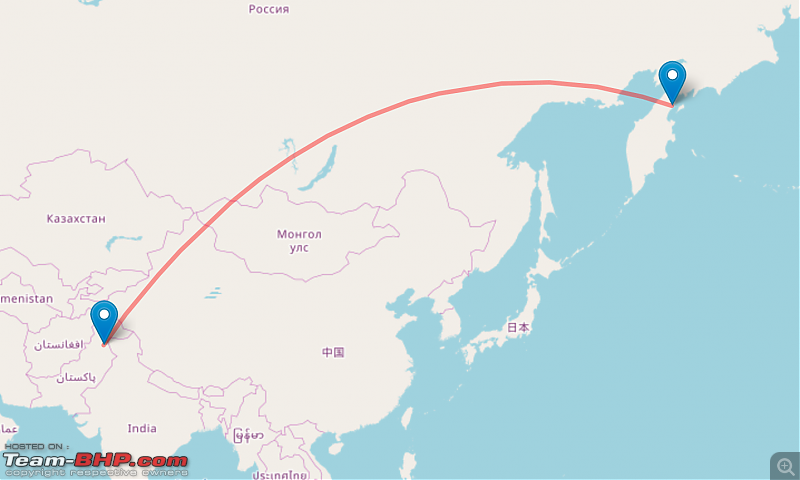
| All times are GMT +5.5. The time now is 05:06. | |






